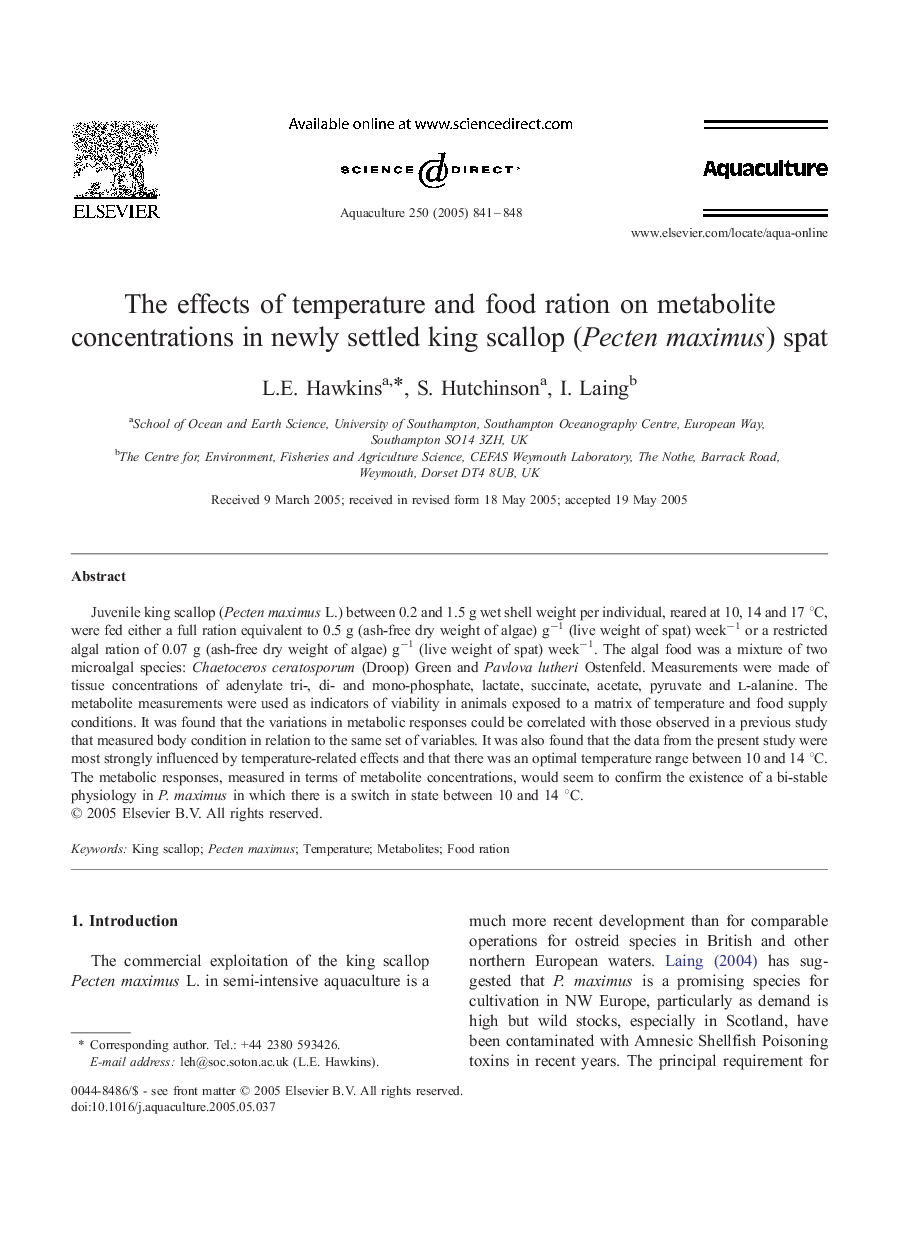| Article ID | Journal | Published Year | Pages | File Type |
|---|---|---|---|---|
| 8974578 | Aquaculture | 2005 | 8 Pages |
Abstract
Juvenile king scallop (Pecten maximus L.) between 0.2 and 1.5 g wet shell weight per individual, reared at 10, 14 and 17 °C, were fed either a full ration equivalent to 0.5 g (ash-free dry weight of algae) gâ 1 (live weight of spat) weekâ 1 or a restricted algal ration of 0.07 g (ash-free dry weight of algae) gâ 1 (live weight of spat) weekâ 1. The algal food was a mixture of two microalgal species: Chaetoceros ceratosporum (Droop) Green and Pavlova lutheri Ostenfeld. Measurements were made of tissue concentrations of adenylate tri-, di- and mono-phosphate, lactate, succinate, acetate, pyruvate and l-alanine. The metabolite measurements were used as indicators of viability in animals exposed to a matrix of temperature and food supply conditions. It was found that the variations in metabolic responses could be correlated with those observed in a previous study that measured body condition in relation to the same set of variables. It was also found that the data from the present study were most strongly influenced by temperature-related effects and that there was an optimal temperature range between 10 and 14 °C. The metabolic responses, measured in terms of metabolite concentrations, would seem to confirm the existence of a bi-stable physiology in P. maximus in which there is a switch in state between 10 and 14 °C.
Related Topics
Life Sciences
Agricultural and Biological Sciences
Aquatic Science
Authors
L.E. Hawkins, S. Hutchinson, I. Laing,
